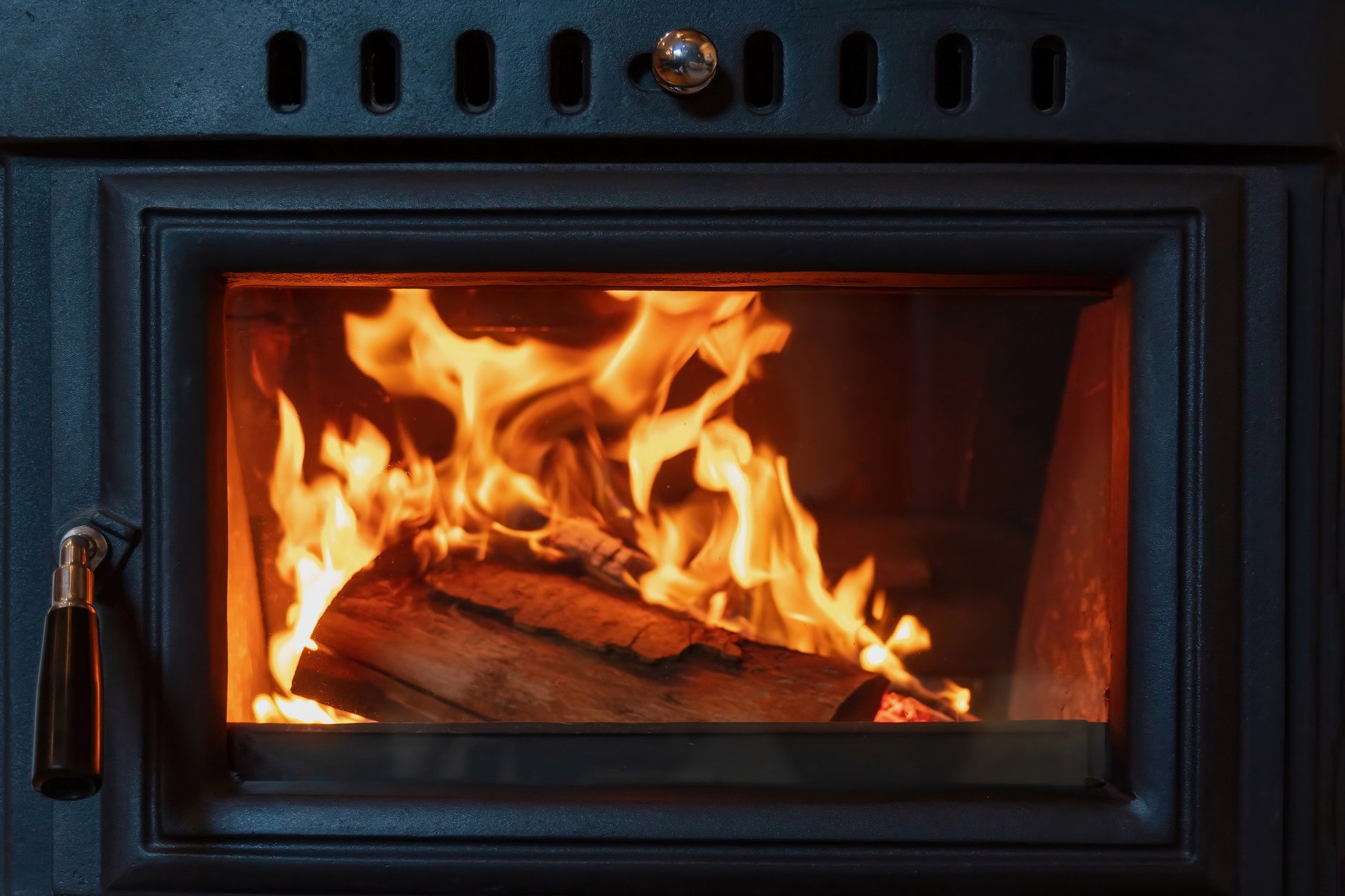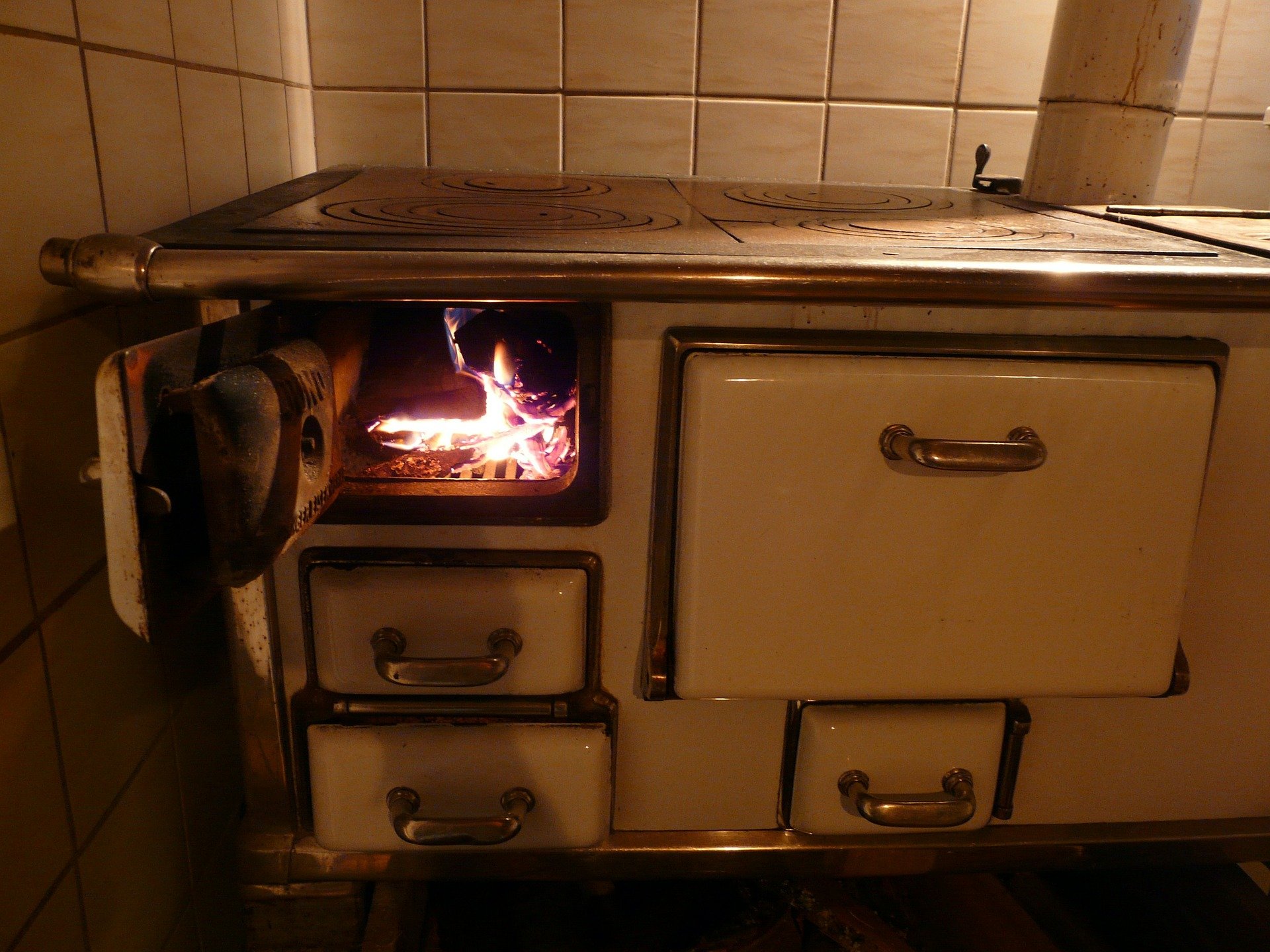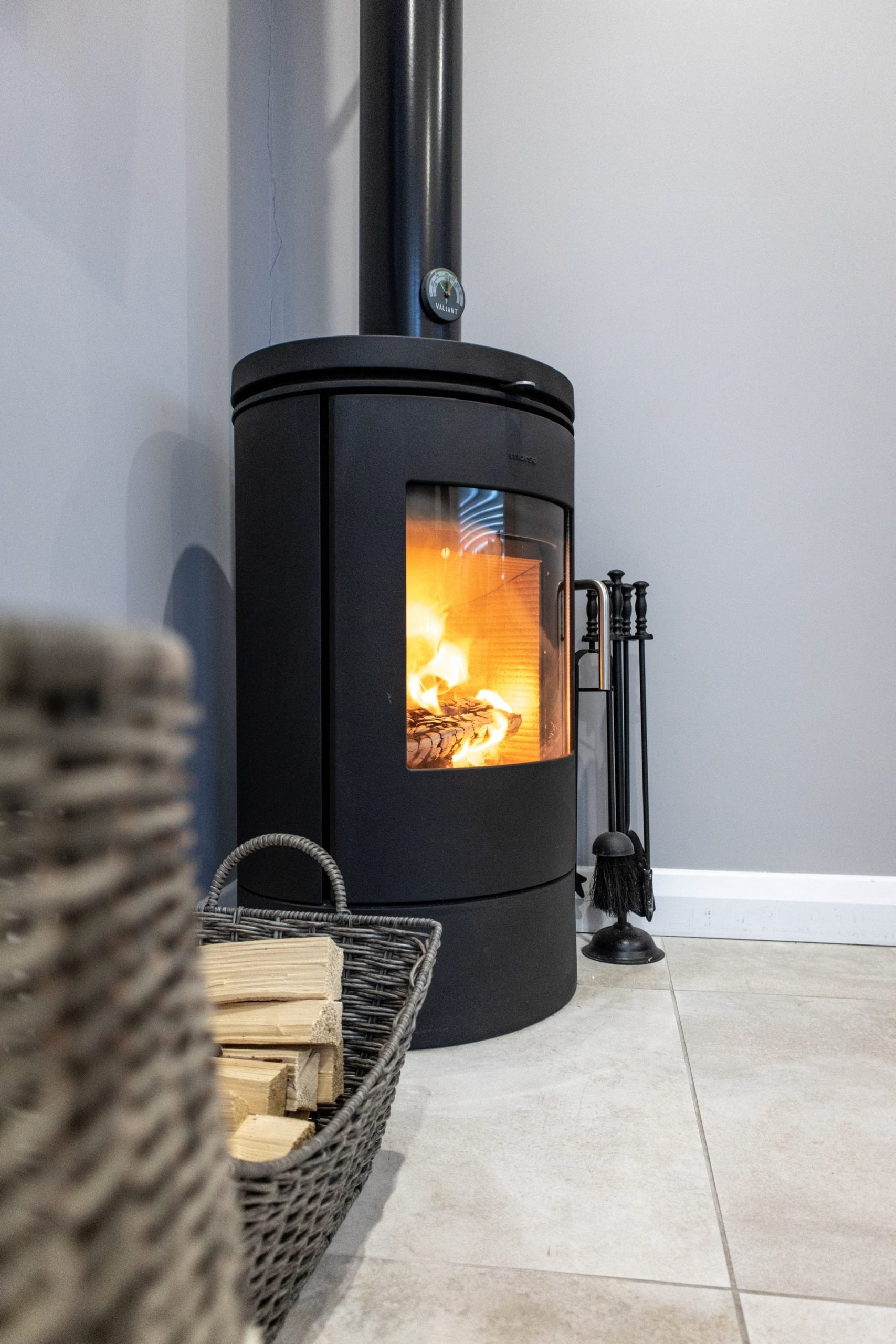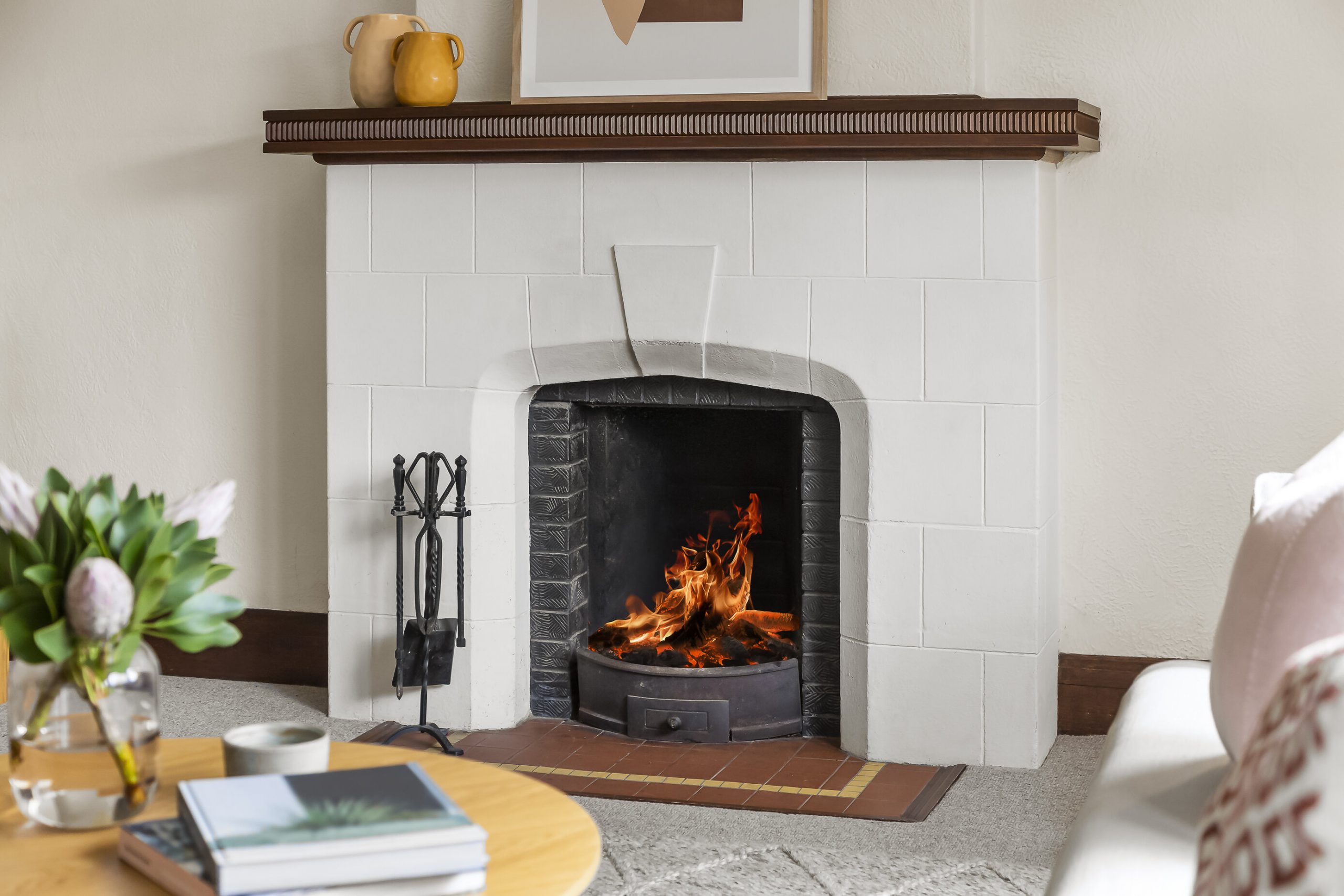Unmistakable Signs That You Need to Clean Your Chimney
Households in cold places rely on chimneys for warmth and comforts. There’s nothing like sitting around the fireplace in the winter, feeling warm and snug. The chimney must be cleaned out regularly to get the most out of your fireplace.
Black, greasy stains on the walls of your fireplace, poorly burning fires, scents coming from the fireplace, and animals making noise inside the walls of your chimney are all things to look for when inspecting your chimney.
In this article, you’re encouraged to take a closer look at each of the warning indicators that your chimney needs cleaning.
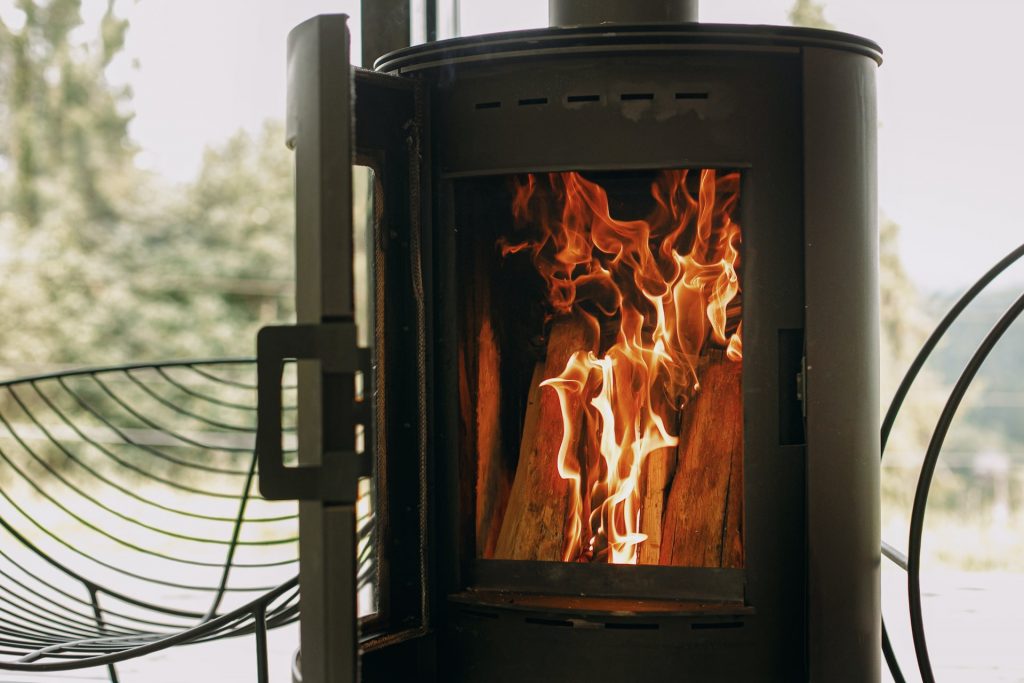
There Are Oily Spots on Your Fireplace’s Walls
Creosote is a tar-like material that forms black, oily streaks on the walls of your fireplace. This stuff can accumulate all the way to the top of your chimney, obstructing airflow. Because of the reduced airflow, fires burn cooler and more irregularly.
Your Fire Isn’t Burning Well
It’s possible that you’re having trouble starting flames in your fireplace because the chimney is clogged or the fireplace damper is malfunctioning. Both of these problems can prevent a fire from receiving enough oxygen to burn effectively.
Also, starting a fire may be challenging with a dirty chimney. It might make it difficult for your wood to get the oxygen it needs to start a fire.
There Are Animals Inside
Animal nests might clog your chimney and catch fire when you’re burning wood in the fireplace. Bird nests are most typically discovered covering the vents at the very top of your chimney. However, squirrels are also known to build nests for their young in chimneys.
These indications are simple to recognise, but the next step is to guarantee that your home is safe from fire damage. You can either hire a chimney sweep or clean your fireplace and chimney yourself.
You can also hire a home inspector to assess your chimney for compliance.
Soot and Black Creosote Begin Surfacing
If pieces of chimney soot or creosote fall on your wood from the chimney, you have a creosote buildup problem and the chimney has to be cleaned. It’s time to have your chimney cleaned if you find your damper is entirely black.
The Chimney Doesn’t Have Air Flow
If the damper is open, you may often feel a flow of air travelling up the chimney even if there is no fire. Observe if there is no airflow or movement of any type, even on a windy day. If that’s the case, it is a sign that your chimney needs to be cleaned.
It’s also telling if the chimney smoke doesn’t rise up the chimney as it once did. Air is supposed to flow up the chimney. If not, a layer of creosote might clog the pipes, which means it’s time to clean it.
Conclusion
Creosote can come in microscopic flakes, which can irritate and injure your airways. You’ll scrounge a lot of creosote when cleaning your chimney. It usually comes off in large chunks that can be thrown away. Prioritise your well-being, and use a disposable breathing mask when cleaning out your chimney.
If you’re looking for top-grade log-burning stoves in Scotland for your newly cleaned chimney, you will find that and more at Stove Scotland! We’re market specialists with extensive knowledge of stoves and fires.
We will work with you to ensure that your stove will precisely fit the design and proportions of your room. Check out the brands on our site today!
Top Tips for Wood-Burning Stove Maintenance: What to Know
Wood-burning stoves are like any piece of engineering: you have to take care of them if you want them to last. If you treat any stove well, it will provide you with a lifetime of service, but if you neglect your stove, you will end up regretting it. With that in mind, this blog post will share a few tips to keep your stove in tip-top condition for many years to come.
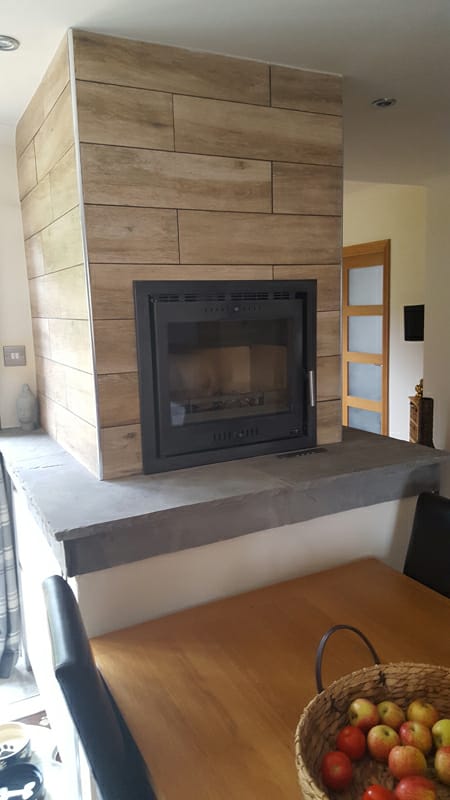
Top Tips for Wood-Burning Stove Maintenance: What to Know
1 - Clean the Glass
Sometimes, the glass becomes dirty because of wood-burning. If you don't clean it, your stove will not be able to fully circulate the hot air around the room. Most of the time, you can simply clean the glass with a dry cloth, but you have to be careful: if you clean it with a wet cloth, it may damage the glass and make it foggy.
2 - Inspect for Rust
As your stove heats and cools, the paint will eventually start to peel, and when this happens, the metal underneath will start to rust. This is not good: rust is a sign that your stove is getting old and needs to be replaced. It also means there will be a lot of rust to clean up when you replace your stove. It is very important to inspect your stove every year, so you can replace it before it gets too old.
3 - Keep the Air Vents Clear
As you use your stove, you will need to keep an eye on the air vents. If you see a lot of ash collecting on them, you will need to clean them by removing the pins or by cleaning the entire vent with a wire brush. You will also want to keep an eye on the damper. If it doesn't open and close properly, you will need to clean it with a wire brush.
4 - Change the Air Filters
You probably don't think about changing the air filters in your home very often, but you will want to make sure your stove has the best possible air circulation. The air filters in most stoves are designed to trap dirt and soot from the burning wood, which helps the stove to last longer and makes your home more comfortable. You will need to replace the air filters every year or so in order to keep them clean.
5 - Replace the Ash Pan
You will need to replace the ash pan on your stove whenever it gets too worn out. The ash pan is what collects all of the ash that you produce while burning wood, so you will want to monitor this very closely. When you start to see the ash pan rust or get damaged by heat, you will need to change it.
Conclusion
If you want your wood-burning stove to last for a long time, then you will need to take very good care of it. With very little effort, you can dramatically increase the longevity of your stove, and you will enjoy the benefits for many years to come.
If you are looking to buy a wood stove in Scotland, contact Stove Scotland. We supply top brands such as Merlin, Aduro, Pod, Askgard, Termatech, and Burley and are confident that we can find the perfect match for you. Don't have a Chimney? That's not a problem – we can fit your stove anywhere!
Does a Log Burner Add Value to Your Scotland Home?
Sometimes, owning a property is not only about having a roof over your head. It is also an investment that you need to be smart about. You choose each material and contractor well because it is the home you will live in for many years, and to some, it is a property that they can sell in the future. Every detail matters when it comes to adding value to your property.
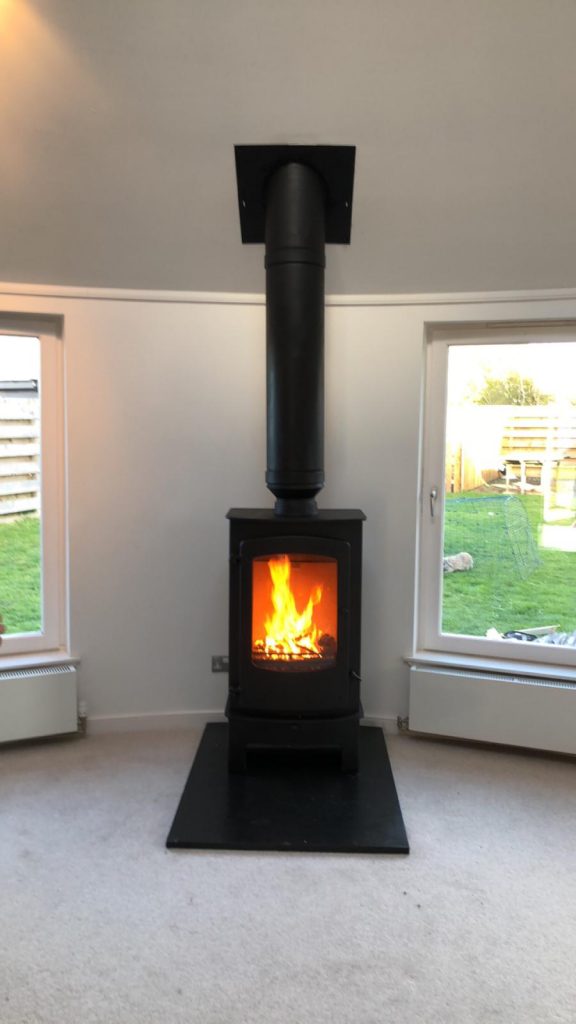
Is a Wood Burner a Good Material Investment?
In every household, every item should be well-thought-out. That includes every kitchen tool and equipment you will add to your property. Each article you spend on should ideally be helpful and can make you feel comfortable and happy.
Now, if you are thinking about whether adding a wood burner helps increase your property value or not depends on many factors.
Here are some ways the wood stove can benefit your home living experience and property value.
Adds Beauty and Warmth
By adding a wood stove or a fireplace, you can add a beautiful touch to your room. If you plan to put it in your living or kitchen space, it will be cosy and warmer. It will enhance the beauty of the room.
If you doubt whether or not this is a good idea, then think of it this way: You are not only upgrading a tool in your home, but also you are making it a more beautiful place to be at.
Every warm and welcoming aspect of a home makes the property more valuable. It adds luxury and relaxation, which are essential factors in making a house a more desirable place to live in.
Reduces Your Heating Bills
Heating your home is a necessity. If you live in a cold area, it is even more important for you to have a sound heating system. Otherwise, you will live in an uncomfortable and cold living space.
However, heating your home is expensive. The cost of electricity and gas is continuously increasing. That is why it is ideal to make an effort to find ways to save money.
If you already have a wood stove or a fireplace installed, you are already on the right path. You can have it as your heating system. You save a lot of money from buying lighting or heating bills because you can use your wood burner every season.
If you ask around, you will realise that wood burners are not very expensive. However, the cost of stocking them up is. But you can always choose to buy a slightly used one, which is an option that you may want to take.
Gives Character to a Room
Sometimes, buying an item initially may not be enough to make your room come to life. You need to do some styling and decorating around it.
A wood stove is one of those items that can make your room more lively and beautiful. If you are setting it up in your living room, you can display ornaments and plants around it to make it more welcoming and cosy. You will also be able to add character to your room.
If you want to use it with a fireplace, you can do it. You can build a relaxed and rustic look. It can make your room look exquisite. Aside from that, it will be a place where you can relax after a hectic day.
Conclusion
Getting yourself a wood stove at home will be a good decision. But, before you jump in, you need to decide which type of wood burner you should get depending on your purpose and budget. You can either get a freestanding stove or a fireplace. If you are going to add it to an existing fireplace, you can choose cladding and accessories to make your fireplace come to life.
If you are still in doubt and have second thoughts about buying one for your home, then do your research first, or get your wood stove from us at Stove Scotland. We aim to provide our clients with professional, honest, and reliable service. We supply, install, and maintain wood-burning stoves at affordable prices. Please contact us for a free no-obligation quote.
Why You Should Be Using Seasoned Firewood for Your Stove
Do you have a wood stove or fireplace? If so, you have to make sure you are using the right kind of wood. Using seasoned firewood is key to maximising your stove’s efficiency.
The term "seasoned firewood" refers to any hardwood that has been dried to a moisture percentage lower than 20%.
How much of a difference does it make to use seasoned wood? An ineffective fire will not heat your home, but an efficient, attractive, and clean fire would. Your wood-burning stove will run more efficiently if you use wood with the proper moisture content.

This article will discuss the necessity of using good, seasoned firewood with low moisture content.
Efficient Wood Burning
You may improve the efficiency of your wood-burning stove by using seasoned firewood.
Water evaporation from wood consumes energy that may otherwise be utilised to heat your house. The wetter the wood, the lower the efficacy of your fire. Using unseasoned wood with a moisture content of 40% will reduce your total efficiency by as much as 50%.
Easy Startups
One of the most common concerns we hear about wood stoves is the work required to fire them up. Wet firewood takes significantly longer to ignite than dry firewood because it requires more energy to get rid of the moisture.
All of the water must be pushed out of the wood before it can burn. When starting a fire with damp wood, you'll need more kindling—and maybe many attempts—to get the timber heated enough to keep it going.
Clean Burn with Fewer Pollutants
Wet wood is not only difficult to ignite, but it also produces more smoke and soot when it heats up. Smouldering flames release hazardous contaminants into your house. The pollutants produced are more dangerous the wetter the wood is. These dangerous contaminants are reduced by seasoning wood.
Less Smoke Byproduct
If you have glass near your stove or fireplace, using unseasoned wood isn't doing it any favours either. Unseasoned wood smoke byproducts might cling to the glass. This obstructs the view of the flames.
Preventing Chimney Fires
Because creosote has the potential to cause chimney fires, it is a significant safety problem for wood stove users. Creosote buildup is unavoidable. Thus, frequent chimney inspections and cleanings from stove installers and maintenance professionals are essential.
Burning damp wood accelerates creosote production, increasing the likelihood of a chimney fire. Using seasoned wood with the proper moisture content for firewood will help keep you and your family safe.
How Can You Tell If Your Wood Is Seasoned?
In seasoned firewood, the colour is typically faded, and noticeable cracking may appear.
We strongly advise all wood-burning stove owners to use a moisture meter while storing their fuel. Moisture meters are available to determine the moisture level of your firewood quickly. Simply split a piece of wood and use a moisture meter to ensure it is under 20% moisture content before burning.
If you don't have a moisture meter, there are a few additional options for determining whether or not your firewood has been properly seasoned. As seasoned firewood loses moisture, it gets a faded appearance, generally grey or yellow.
Furthermore, seasoned firewood is lighter than wet firewood because it contains no water.
Conclusion
In conclusion, you must use only seasoned firewood to ensure that your home is adequately heated. Using unseasoned firewood is not only inefficient, but it can also be dangerous to your health and safety.
Do you want a wood stove in Scotland? Stove Scotland provides high-quality wood stove services, ensuring excellent customer satisfaction. Get a free quote today.
Warm and Cozy: Where to Place Wood Stoves in Your Home
Wood-burning stoves make any place homey. You will be relocated back to your home for as long as you see one, no matter where you are. This feeling might be why they are popular. Although they have their hazards, they are still a great source to heat your home or any other place domesticated.
Unlike gas and electric stoves, a wood stove is convenient to heat your home, especially when you have a woodshed near your yard. Since they can harness the sun rays and the heat it gives off, the blue flame from the stove is just enough to heat your house during the winter.

With all the benefits, we face the dilemma of where to place the stove. Thankfully, this article will help you solve this age-old puzzle.
How Many Rooms Should Be Heated
Putting your wood stove near the centre of the family room is a good idea. This way, you can heat all the rooms in the house.
The room where you place the stove would be the one you want to warm the most. If you are going to heat the entire house, you might have a hard time bringing the heat. Even then, try to put the stove in the centre of the house and let the heat spread.
Gather your friends and loved ones in the living room while the warmth spreads to the other rooms. You can relax and enjoy the stove's heat while chatting with the family. The rest of the house would be warmed by your stove.
The kitchen is also a great place to put your stove. During breakfast time, all the family members gather in the kitchen. This time is a great time to warm the area up. You can also cook using the stove.
Consider How the Temperature Will Affect Drafts
The draft that comes from the stove door can push the heat from your room. It is recommended that you place a fan near the stove. This way, you can balance the temperature.
The draft would also diminish once you place the stove at a low end of your room. If the place where you will put the stove faces the outside, you might have a draft. It is the reason why the furnace cannot function well.
Try to move the stove near the centre of the room. This way, you can minimize the draft in the room and let the stove function more efficiently. To avoid moving your stove, you might want to cover the gaps in your windows. Thus, you can create better heat.
Nowhere Near Combustibles
The best place to put your stove is nowhere near anything that can catch fire. Avoid placing the stove near curtains, walls, and woodwork. It was already mentioned that wood-burning stoves still produce smoke, and you do not want to be putting it near anything that would catch fire easily.
Try to place the stove near the centre of your room. This way, you can watch the furnace and ensure it does not cause any trouble. There is a gap between the stove and the ceiling. The gap is used for the smoke to get out of the room.
Conclusion
Wood-burning stoves are not just for the outdoors. You can use it inside the house, but you must be careful about where to place it. These tips will help you place your stove without any problems. You just have to remember to keep it from your curtains and other things that can easily catch fire.
If you are looking for a store that sells wood stove in Scotland, you do not have to look far. At Stove Scotland, we offer tops brands, such as Aduro, Askgard, Merlin, and Pod. Check our website now so that you can see what will fit your home.
Amazing Ways to Make Your Wood Stove Last for Centuries
Wood stoves are essentially simple machines that provide heat to a home when the owner needs it the most. They are controlled fires, and they require regular maintenance to ensure they maintain their efficiency.
Regardless of how efficient your stove is, you will still have ash. There are several ways to remove ash from your wood stove; one of the most common methods is with a shovel and a bucket placed outside in a safe area. The tools should be made of metal and withstand high temperatures.
All wood stove stoves need to be cleaned regularly; even the most efficient design will leave ash residue behind. Using the essential tools of an ash shovel and an ash bucket, you can make sure your stove is clean.
You must also prepare enough space in the wood stove so the bucket can withstand high temperatures; this bucket should be placed outside and away from anything flammable.

Amazing Ways to Make Your Wood Stove Last for Centuries
Most maintenance must be done while the stove is not in use so that there is little danger of burning yourself as you work on the stove. Some aspects you need to check consistently include:
The Doors and Gaskets
You should inspect the firebox door for an airtight seal. The first step is to check the rubber gasket on the metal door. One of the easiest ways to prevent this is using a money bill. Shut and lock the firebox door, then place the dollar halfway between the gasket and door.
Gently pull on the dollar bill and see how much resistance you feel. If there is little resistance, you'll need to replace the rubber gasket. Nowadays, rubber gaskets are made from a fibreglass material that can tolerate high temperatures.
One way to clean and inspect the glass window in your firebox door is to wipe it down with a damp rag and an ammonia-based cleaner. This will remove the white ash that sometimes collects at the edges of your glass window.
However, if brown stains appear on your glass, you might need to buy a wood stove glass cleaner; these stains often form when your stove is not burning correctly. These brown stains are from wet or green wood, slow-burning fires, inefficient combustion, or excessive creosote in pine wood.
The Chimney and Flue
Hire a chimney sweep that comes out once a year to eliminate creosote buildup, which results from low- and slow-burning fires and releases copious smoke and particulate matter. When these hit the cold stove pipes connected to the chimney, smoke and particles are more likely to form creosote.
Ensure your wood stove's fire is good, hot, and consistent to prevent this. Some other factors can cause creosote buildup: a fire that's too hot and warps the firebox or causes other parts of the stove to bend over time. Of course, a fire suppressant may also be applied to put out a chimney fire if creosote buildup is significant. The best solution is to purchase creosote cleaning logs and use them during regular fires to clear out the creosote while it burns away.
Prevent Rust Like This
Prep the wood stove by painting it with a heat-resistant coating. Make sure the paint is dry before lighting a fire inside. Start a fire even if it’s summer — this will help you test if it’s working correctly.
Conclusion
There are many different kinds of wood stoves, each with its unique features. If your stove has a feature like a catalyst, firebrick, soapstone or other options, then check your owner’s manual for recommended maintenance. Find a nice warm day and check to see that everything is working correctly. You’ll sleep better at night with these tips, knowing your stove is tip-top shape!
Purchase a durable wood stove in Scotland at Stove Scotland today! We sell top brands such as Merlin, Aduro, Pod, Askgard, Termatec, and Burley, which we can install anywhere in your house! Get your free quote from us today!
How Does a Fireplace Add to the Value of Your Home?
For a variety of reasons, you may be looking into a new fireplace installation. You may be putting in a new fireplace or redoing the entire look of your home. However, some people may be adding a fireplace to raise the market worth of their house. Is it possible to increase the value of your home by installing a new fireplace?
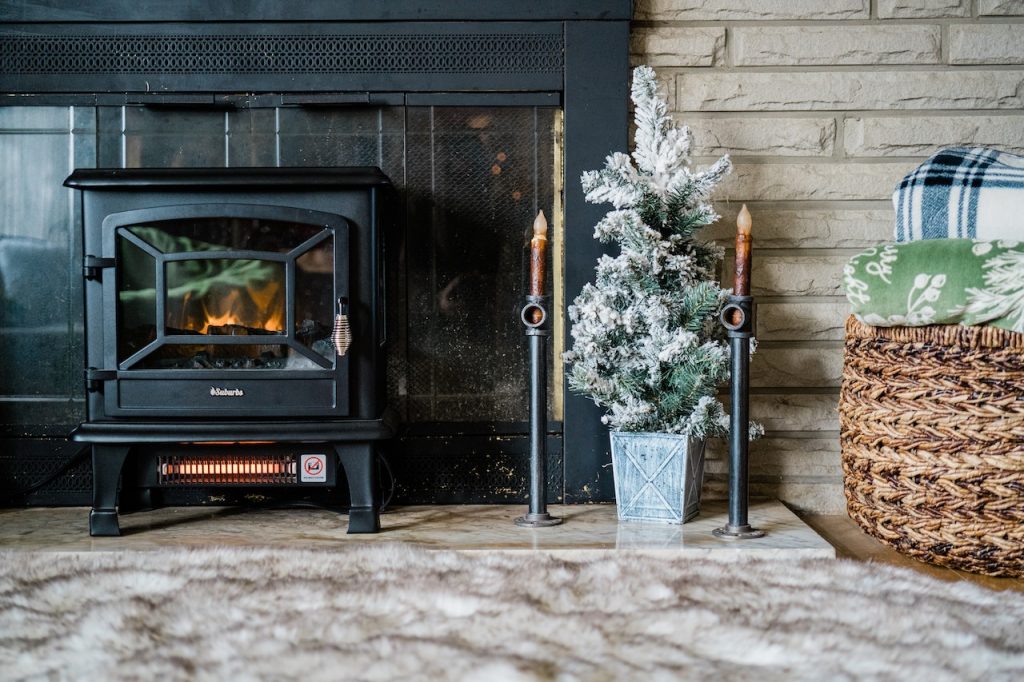
Potentially, yes. Installing a new fireplace can help increase the value of your home in a cost-efficient way. However, this may depend on various factors. Here are some aspects that may affect the value a fireplace can add:
Is the Fireplace Energy-Efficient?
Upgrades to a more contemporary, energy-efficient fireplace might raise your EPC (Energy Performance Certificate) band, adding thousands of dollars to your sales price.
Having a green fireplace will be an enticing selling point for potential purchasers, especially with additional green taxes on the horizon. For both your house's current and future owners, efficient fireplaces may increase the property's value because they can save money on heating costs.
Is the Fireplace Functional?
Incorporating a fireplace into a media wall enhances the aesthetics of the space and increases its usability. To do away with cumbersome TV stands, you might use a media wall. This can double as a storage room for books, records, or other goods.
Adding a fireplace as part of a larger media wall makeover will increase the value of your property.
The Aesthetics of the Fireplace
Still, the aesthetics of your fireplace can add to its value. An unappealing fireplace can easily downgrade the value of your home. A modern home suits a stylish modern fireplace.
How Much Value Will a New Fireplace Add to a Home?
The value of a property can be increased by 5% if it has a new fireplace. Property evaluators and interior designers often agree on this. It may seem like a small percentage, but when you consider the whole worth, it's a lot more than you may expect.
The House Price Index estimates that the typical home in the United Kingdom is worth £250,341 (April 2021). If you were to install a fireplace, you would get an extra 5%, which would bring the total to £262,858 - an additional $12,500! Thus, adding a fireplace to your home may dramatically affect its value.
Fireplace Types to Consider Adding to Your Home
If you want to add a fireplace to your home, you have various options. You can choose between different styles of fireplaces to increase the value of your house. The most common types are:
Solid Fuel
An open, solid fuel fireplace may add significantly to the resale value of your property if you don't already have one. Solid fuel fireplaces are a time-honoured heating method that uses a broad stone fireplace with cast iron grates or baskets.
However, installing a new wood-burning fireplace might be pricey if you don't have a chimney or if your chimney has been stopped up in the past. If you don't already have one, you'll need a fireplace and a chimney constructed.
Electric
There has been a rise in the popularity of electric fireplaces on the market since the 1980s. This is the ideal option if you do not want the hassle of connecting your fireplace to your home's gas supply. Fireplace installers may recommend this type as they offer flexibility whether you want it to be freestanding, wall-mounted, or inset.
If you want to build a media wall, there are a lot of electric fires that are made for this. Electric fires are also becoming more high-tech with app-based controls, 5D fire displays, and virtual reality.
Gas
Gas fireplaces are among the most adaptable, versatile, and affordable options. Newly constructed homes that don't have working chimneys can benefit from gas fires because they don't require the use of a chimney.
Conclusion
Installing a fireplace can be a great way to improve your home and potentially raise its resale value. To maximise the value, choose the right fireplace for your home and make sure it is functional, energy-efficient, and aesthetically pleasing.
Are you looking for fireplace installation in Scotland? Stove Scotland has market experts to get you the best stove and fireplaces you need.
5 Ideal Ways to Maintain a Safe Wood Burning Stove at Home
When installing any item in your home, safety should always come first. This applies to anything, from washing machines to toasters. However, no home appliance is more hazardous than a wood-burning or multi-fuel stove.
Without proper installation, your stove could push through blocked air vents to no avail. This could lead to potentially dangerous build-ups of carbon monoxide in your home.
Besides the potential carbon monoxide poisoning, they are a source of heat and, to a large extent, a source of your home's energy. For this reason, they need to be installed and used responsibly to prevent potential fire hazards.

Here are five ideal ways to have a safe wood burning stove at home:
1. Maintain Adequate Ventilation
You need to make sure that air can get into your home through any windows or doors and then circulate your home. This is especially important during the winter when the stove will be in most demand.
If you live in a home with more than one level, you may need to consider the installation of an exceptional ventilator on your roof.
2. Clean All the Flues Regularly
When a wood-burning stove is used, dust can quickly build up in the pipes and clean it regularly. Failure to do so can lead to clogs and potentially dangerous carbon monoxide build-up.
3. Make Sure Any Stove You Purchase Is Certified
A credible manufacturer reviews any stove you purchase from their store to ensure that it built according to industry standards. This is why you need to be wary about purchasing second hand units.
When you purchase a used stove, you will have no way of knowing what the furnace has been used for and where it has been. Unless you can effectively determine its quality or if its warranty still stands, it’s best to look for a brand new model.
4. Keep Ample Space between Your Stove and Flammable Objects
It would be best if you placed your wood-burning stove well away from flammable objects. Flammable and combustible materials are anything made out of foam or fabric.
One metre away from the stove would be enough to lessen the risk of starting a devastating fire. Additionally, ensure that any vents for your stove are well above the level of the flame and that any heat generated does not build up around it.
5. Have Your Stove Serviced Regularly
A properly maintained and serviced stove will last you longer than one that is not. This should be done not just when it acts up, but regularly to detect potential issues.
It is essential that the flue is free from any build-ups and that it is cleaned at regular intervals to ensure that there is adequate airflow. This is why a pre-emptive service is always better than calling for repairs.
Conclusion
There are now plenty of wood-burning stoves built to the highest safety standards and offer an efficient and effective way of heating a home. However, it’s not something that you can do yourself. To maintain your safety, leave the wood burning stove installation to professionals and select the best service provider around. This would mean choosing Stove Scotland!
We will ensure that your stove will perfectly fit the style and dimensions of your room without worrying about having a chimney. If you need professional stove installers in Edinburgh, contact us now!
Your Wood Stove Burning? Here’re Why and How to Put It Out
The main goal of a wood-burning stove is to burn wood more efficiently to produce more heat. But despite its intensity controls, it can become too hot and lead to an accidental fire. Some reasons why that happens to a wood stove and tips on preventing them include the following:

Problem #1: Too Much Wood
Although a large wood stove can hold more than a smaller one, you should only put in the amount of wood your particular model and size can hold.
Adding more wood to a big wood stove could cause the furnace to burn too hot. To avoid this, we like to burn small, medium-sized logs in our wood stove at one time and make sure not to put too much wood into the furnace.
Solutions:
- Ensure that the logs we burn do not exceed the height of the air vents at the back of our stove. These vents provide extra fresh air needed for secondary combustion, which helps us burn our fires more efficiently. If you keep too much wood on the fire, it could lead to overfiring, which happens when temperature levels inside the wood stove are higher than what it is designed for.
- Overfiring could cause damage to the components, particularly to the metal plate located near the top of the firebox. If you notice that your stove is burning too hot, ensure that there isn't too much wood inside your stove or take out around two to three logs.
Problem #2: Wide-Open Air Vents
Wood stoves burn more efficiently if the air vents are closed down in stages as the fire progresses. When the fire is intense and lively, most of the air vents should remain open so that plenty of air can flow through.
However, when the fire burns low and smoulders, it needs to be fed with just enough oxygen to get it going again. In these instances, most air vents should be closed entirely so that the flames gently and steadily burn the wood.
This allows for an even more efficient burn because it prevents heated air from leaving the stove too quickly and keeps a low-temperature fire going. Prevent this from happening with the following solutions:
- If wood stove vents are left open by too much during a fire, your stove can be burning too much. With the vents fully open on a furnace, oxygen is being fed to the fire more abundantly, and the resulting flame will burn the wood faster. A speedier burning fire is a hotter burning stove.
- If the fire is too large, slide the air vents to half-open or even a quarter open to maintain proper fire levels.
Problem #3: Wood Stove Is Too Big
A wood stove’s biomass output depends on the heat needed to maintain a comfortable living environment. When a wood stove is too large, it can overheat a room.
If you find that your stove is overheating, you should:
- Open up whatever doors to the space or open any windows for better airflow.
- If a wood stove is too small, it may not be able to burn enough wood (biomass) to produce adequate heat. A fire that burns too slowly can be inefficient and produce more smoke.
- Increased smoke accumulation inside the flue due to inefficient burning can increase creosote buildup. Clean the flue more frequently or replace it when needed.
Conclusion
Wood stoves from Scotland require the same careful use as any home device. Purchase one with ample size to warm your house, place only enough wood to power the machine, and maintain proper air vent positions, so the wood stove remains efficient and safe for everyone to use.
Purchase a quality wood stove from Scotland at Stove Scotland! We carry top brands such as Merlin, Aduro, Pod, Askgard, TermaTech, and Burley throughout Scotland and the UK. No chimney? No problem! We’ll install your furnace anywhere! Get a free quote from us now!
How to Make Your Wood Burning Stove More Efficient: 5 Tips
Wood-burning stoves are under fire, with new statistics identifying them as a "significant contributor" to tiny particle pollution. But it's not all bad news: the same study reduced the projected share of particle pollution caused by wood stoves from 38 per cent to 17 per cent.
These tips will help maintain your wood burning stove as energy-efficient as possible. Read on!
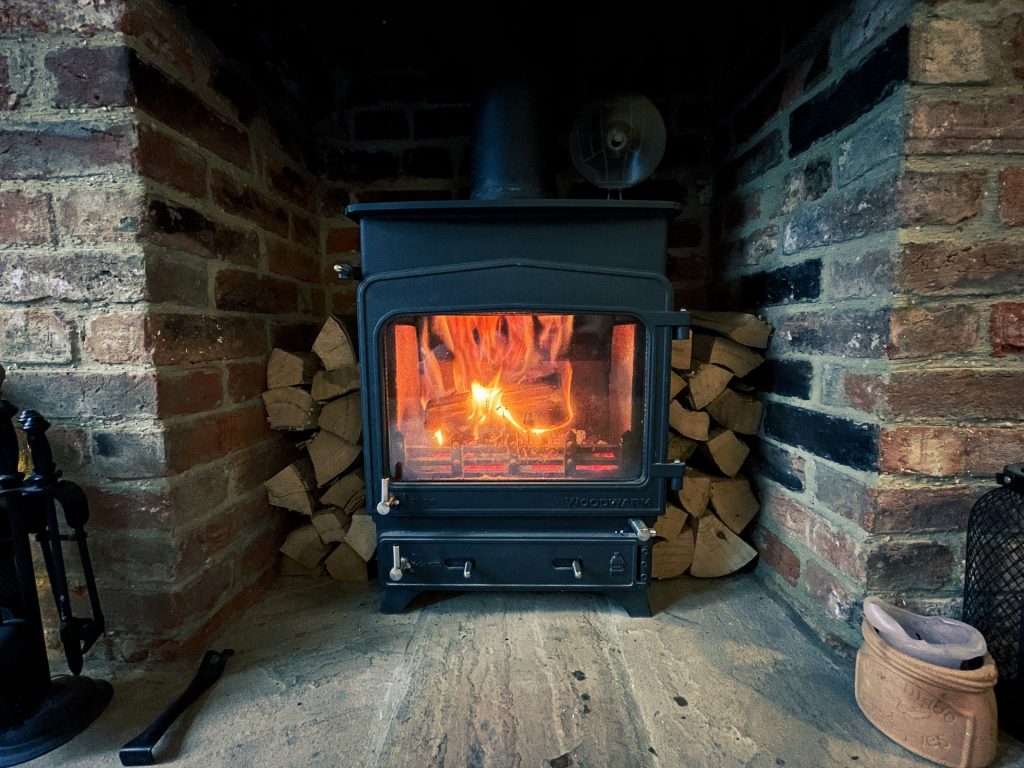
1. Upgrade to an Eco Model
Wood-burning stoves must comply with clean air legislation as well as construction codes. The new EcoDesign guidelines, which took effect in January 2022, require all newly built appliances to be cleaner and more efficient. Look for stoves that are at least 75% efficient (meaning that 75% of the heat goes directly into heating a room); however, the most recent versions are up to 90% efficient. It should be noted that open flames only provide 15-20% efficiency.
2. Choose the Right Equipment for Your Space
The size of the appliance you need depends on the size of your room and how often you use your stove. Remember that a stove should be only one part of a total heating system. To ensure you're getting the heat you need, consider the BTU output, which is the amount of heat it puts out per hour.
3. Use the Right Kind of Fuel
The most critical factor in ensuring optimal wood-burning is selecting the correct fuel for your wood-burning stove.
Kiln-dried firewood logs are placed beneath a bench, with boxes of Lekto Wood Fuel on top.
The best wood for the job will be extra-dry, seasoned firewood with a moisture percentage of less than 20%, which is the perfect moisture level for burning wood effectively while also lowering emissions and soot formation.
Aside from burning more effectively, using seasoned and extra-dry firewood ensures minimum smoke and ash for a healthier wood-burning stove, making maintenance easier and keeping the device running at its peak during every burn!
4. Maintain Regular Stove Maintenance
A wood-burning stove requires a lot of regular care, from clearing away extra ash to repainting your appliance, to keep burning your wood as effectively as it should.
Whether you need to repair problematic components, remove harmful corrosion, or just clean the interior of your stove, you should always keep your wood-burning appliances in good working order before beginning to use them more regularly. Proper maintenance and repairs will not only help you burn your firewood more effectively and conserve precious energy, but they will also save you a lot of money in future repairs!
5. Learn When to Use Your Burner
A wood burner isn't the most effective way to heat your home, and it should only be used to supplement a renewable heating system.
For example, in a home with a ground source heat pump or an air source heat pump, you may need to utilise a wood burner on occasion during freezing weather.
Conclusion
If you use the proper wood-burning techniques and make sure you have the right wood-burning appliance for your home, you should be able to create a safe, efficient, and comfortable environment for you and your family.
The perfect combination of contemporary technology with age-old philosophy, wood-burning stoves offer you the means to keep warm and comfortable throughout the chilly winter months.
Are you looking for stove fitters in Scotland? Stove Scotland can help! Our team is composed of professional tradesmen who are all experts in installing stoves. We take a custom approach to each space, even if you don't have a chimney, so that you can achieve the wood burner stove of your dreams. Don't hesitate to contact our team today for a free quote!


